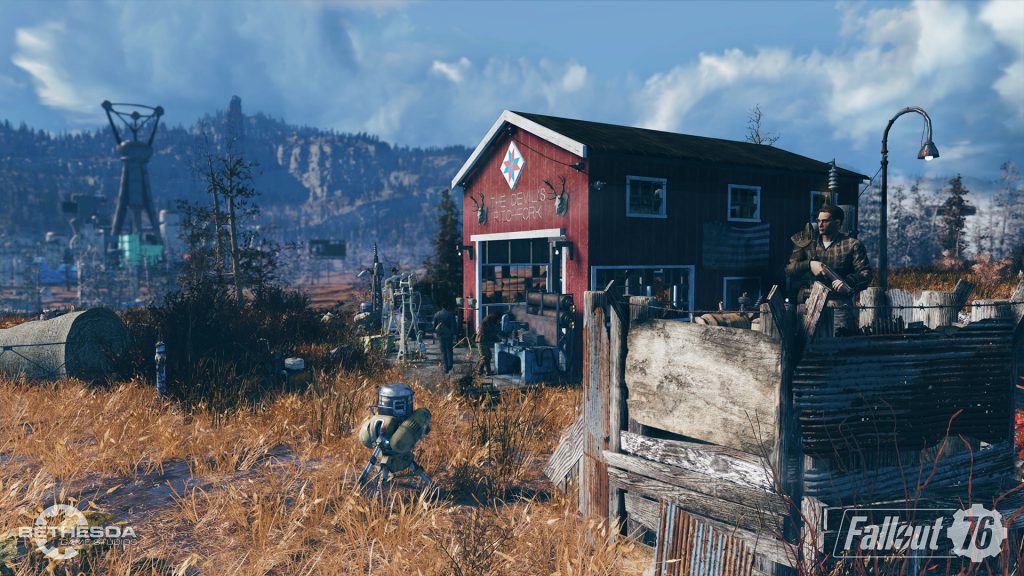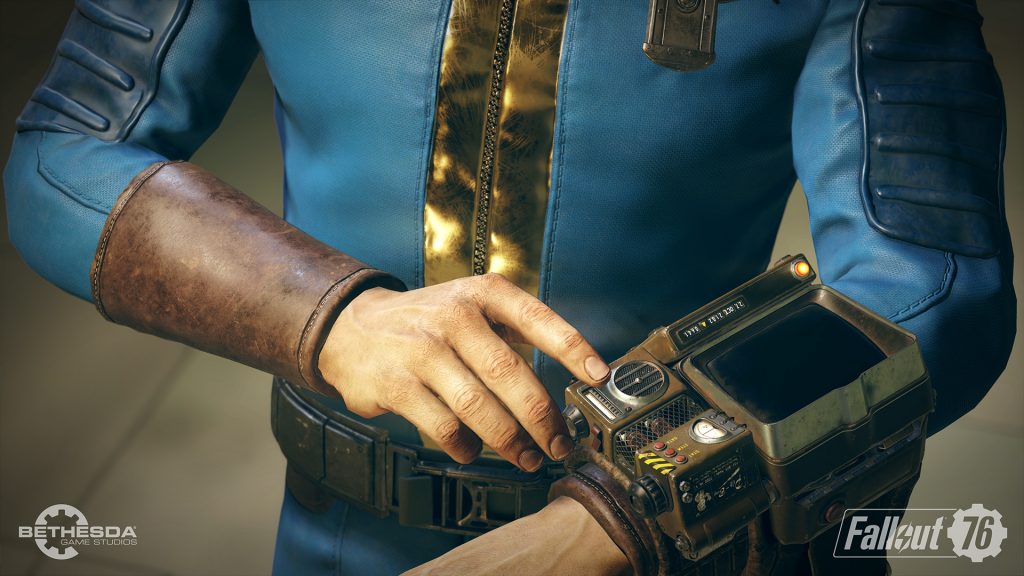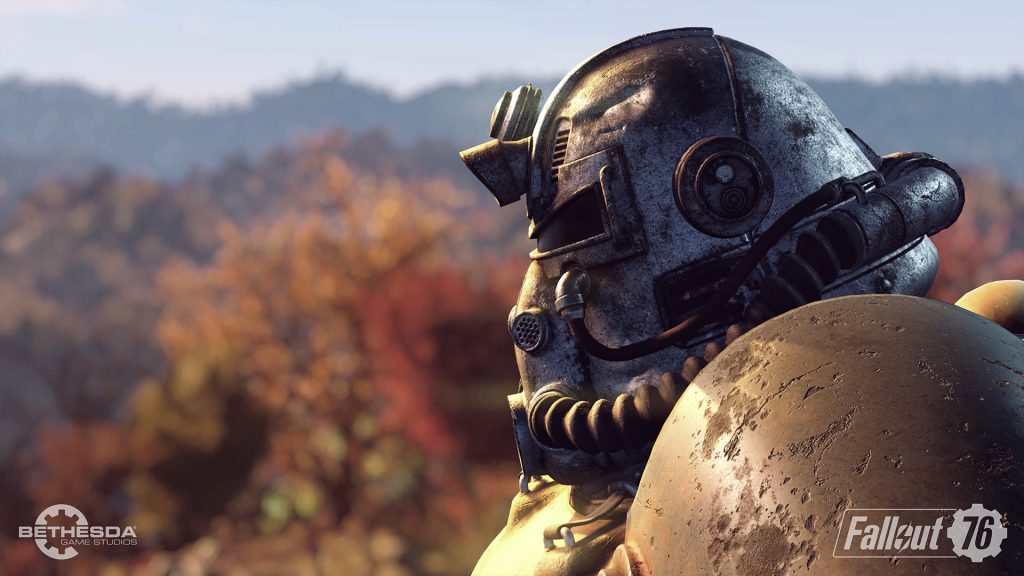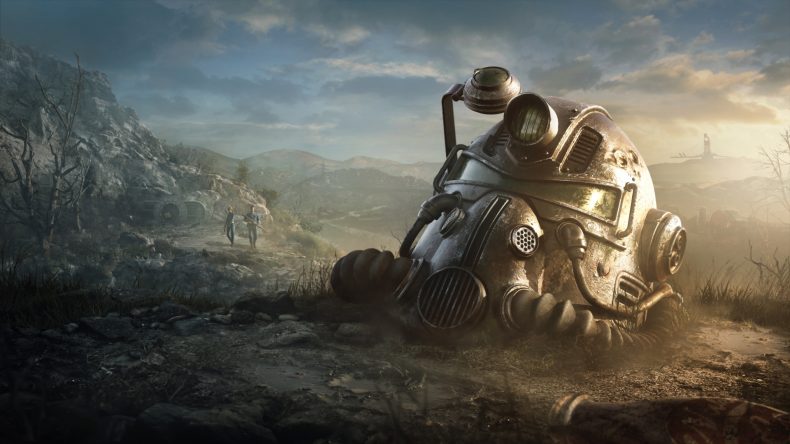November 14, 2018
It’s a tantalising prospect, the idea of being able to forge out with a friend or two into the nuclear wasteland of Fallout. To journey together and experience the thrill of exploration and discovery that the scale of a Bethesda project offers players was very much what was hinted at when Fallout 76 was revealed. Taking the crafting and base building elements from Fallout 4 and placing them into a new world in the Fallout universe where you and your friends could build settlements and defences against Ghouls and Super Mutants, and even other players, all with the background of a rich environment begging to be explored. It’s a fine idea. The reality, however is something quite different and does require an adjustment in the way that you think about what Fallout 76 is.
If you are coming into the post apocalyptic lands of West Virginia with the hope that it will be an extension of the 2015 release of Fallout 4 then you will be sorely disappointed. This is a Fallout game in name only, there are no grand quests to follow or characters to talk to, rather this is a survival crafting game set in the Fallout universe. A game that you can play in solo or, if you wish to, team up with other players and tackle some of Appalachia’s more challenging dangers.

The story premise is brief. Whereas previous entries in the series have seen you emerge from your vault hundreds of years after the Great War and the events of 2077, Fallout 76 has you emerging just 25 years after the bombs fell with the mission to “rebuild America”. You wake up in familiar surroundings, in a cramped tin can underground with a hangover – today is “Reclamation Day” and it is your job to get back out into the wilds of Appalachia and rebuild. Your fellow vault dwellers have already departed, presumably while you were sleeping off your over indulgence from the night before at the Reclamation Day party. Your first task is given to you via holotape in the Overseer’s office, she has departed before everyone else to get a sense of what awaits the intrepid dwellers of Vault 76, and much of the overarching quest line that Fallout 76 has you working through is following in the footsteps of the Overseer, uncovering what has happened in the 25 years you have been cooped up, safe in the vault.
The quests themselves are perfectly adequate for a game focused around survival and crafting. Early ones see you learning how to boil water and cook food to avoid disease and radiation poisoning, but as you progress you find more interesting quests, for example one that that takes you to a mysterious basement in an old mansion and an opportunity to join a secret organisation of lady crime fighters, or another that has you trying to solve the kidnapping of a child at a water park. As there are no NPC characters in the game world, quests are given to you through holotapes you find in the world, reading terminals or via the numerous automatrons and Mr Handy’s that have been left over from the world before. This form of quest giving isn’t new to Fallout or Bethesda games in general, however, there is a sense that because you know everyone is already dead each task ultimately feels a little hollow, even if the quest rewards themselves are quite useful ranging from vital items such as Stimpaks and Rad Away to caps, armour items and often new crafting item plans.

On your own, Fallout 76 can be a lonely and sometimes empty experience, with a core gameplay loop of venturing from your makeshift C.A.M.P., a portable base of operations, to various locales gathering every item you can lay your hands on. Junk in the world of Fallout 76 is the most valuable resource as you use it for crafting everything including crafting stations to make armour and weapons and their various modifications, as well as defences, structures and even furniture and cosmetic items to make your base more habitable. The fact that your C.A.M.P. is portable kind of renders the need to build a complex structure a bit pointless unless you are looking to create something a little more homely, be warned though because as soon as you start to build any meaningful kind of structure it will be randomly attacked by a group of enemies which will cost precious junk resources to repair. By teaming up with a friend you can speed the process up of building defences, however, it appears that each individual has their own C.A.M.P and there doesn’t seem to be a way of creating a team base. Instead, it seems that much of the focus for team work is centred around workshops. These are areas on the map that have the workshop bench those familiar with Fallout 4 will recognise. The workshop bench is already stocked with a lot of crafting materials and as players you can claim any that aren’t already taken over by other players. It is in these workshops where you can create team bases, however, by claiming one you will paint yourself as a target whereby other players may well want to come and claim it from you.
The multiplayer aspect of Fallout 76 is an odd blend of co-operation and PvP. Workbenches appear to be a more direct statement that you are interested in PvP, however, the rest of the time players seem to be just avoiding each other or waving inanely before offering to trade and then wandering off. Bethesda has employed a number of anti-griefing measures that by and large work quite well. Another player can shoot at you, but will do minimal damage unless you shoot back which ensures that only those players interested in that aspect of the game will get to experience it.

Contrary to other online survival games, you do not pick a server rather each time you load into the game you are in a specific instance. Each instance is limited to only a handful of other players, 24 in total, which, combined with the world’s size, means that you won’t stumble across another player all that frequently. However, I can envisage some problems further down the line, for example, what if another player or group of players have set up a base in the location you had in another instance? Would your base exist there as well, or would you have to find another location? For a game that is about “rebuilding America” it seems at odds that the actual base building stuff doesn’t quite work in the way you would think it does.
There are some carry overs from the core Fallout games, VATS exists, but as you are playing in a live environment it doesn’t quite work in the same way as in the single player games which makes it a little clunky to use. The best use I have found so far is to use VATS as a means of targeting difficult to hit enemies like bloatflies, rather than using it on larger enemies. Combat has never been a strong point in a Bethesda game, and I would like to say that it has been improved upon in Fallout 76 as it forms such an integral part of the game, however, it is still clunky and a bit imprecise. Where I do think there has been some positive tweaks to familiar Fallout systems is through the SPECIAL perks. Each time you level up you can assign perk cards to one of the attributes: things like reducing the carry weight of food items, or increasing your damage with melee weapons. Furthermore, these perk cards can be swapped in and out depending on the situation you find yourself in.

Fallout 76 can look quite nice, even pretty at times with some nice lighting effects, but venture indoors and all of that lighting work is thrown out the window with bland, lifeless textures that serve as a reminder that Bethesda really does need to do some work on its ailing engine. There are also a dizzying array of bugs that range from little visual glitches to quest breaking issues, one of which I experienced that has now been patched out. Bethesda is known for releasing games littered with bugs that tend to be poorly optimised and Fallout 76 is no exception with inconsistent frame rate drops as well as the bugs, but it doesn’t feel any worse than previous games in all honesty. I do feel, however, that patience is wearing a little thin with its seeming lack of care over the quality assurance part of its products, and stacked up against some of the other things that Fallout 76 does or doesn’t do it is much harder to overlook them.
For all its faults, I have enjoyed my time in West Virginia, but there is no escaping the fact that the format isn’t quite as successful as it could be. It waters down a lot of the things that make the single player games so compelling, but if we look at the things that Fallout 76, as a survival based crafting game, does then it performs quite well. There is a nice mixture of crafting recipes to learn with some reasonably complex survival elements as well a good number of weapon and armour modifications. I do have reservations about the base building elements and how they will work going forward, and the PvP elements do seem to be a bit oddly implemented. Bethesda was keen to stress that no NPCs in Appalachia meant that meaningful stories and interaction would have to come from the other live players, but so far that hasn’t really been realised with players choosing to avoid each other for the time being. There is a foundation there though, and as a live game I’d expect Bethesda to iron out some of the bugs and start to implement more things for you to do and make your quest to rebuild a little more meaningful.
Sense of exploration
Good fun with a friend
Decent writing
Lots of bugs and glitches
Base building seems pointless
Frame rate drops
Combat is clunky
If you can re-frame Fallout 76 as a survival crafting game in the Fallout universe rather than viewing it as the next instalment in the series then you will have a better time. It is not without its faults, but there is a base there that has the potential to be improved upon as time goes by.





